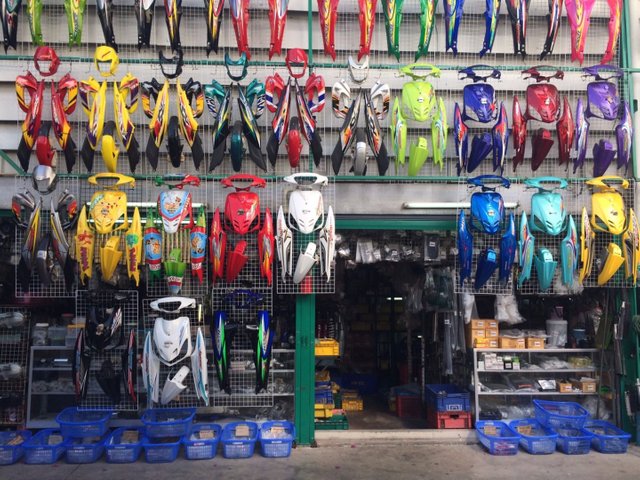Vital Motorcycle Parts NZ for Peak Performance and Safety
Vital Motorcycle Parts NZ for Peak Performance and Safety
Blog Article
Mastering Motorcycle Gears: How to Maximize Your Riding Experience
In the realm of motorcycling, grasping the art of gear manipulation is critical for improving your riding efficiency. Appropriately utilizing and recognizing motorcycle equipments can significantly influence gas, control, and acceleration effectiveness, changing a typical adventure into a seamless, electrifying journey.
Comprehending Equipment Mechanics
At the core of motorcycle dynamics, equipment technicians play a critical role in converting engine power right into activity, eventually dictating speed and control. The equipment proportions, thoroughly created, figure out the relationship between engine changes and wheel turns, affecting acceleration and gas effectiveness.
Comprehending equipment auto mechanics begins with identifying the value of the gearbox, which houses multiple equipments of varying sizes. These equipments connect via a process known as meshing, where teeth of various gears involve to transfer power. The accuracy of this interaction is essential; any imbalance or damage can lead to ineffective power transfer, hindering efficiency. Additionally, the setup and size of equipments affect the motorcycle's ability to deal with various loads and rates.
In addition, the concept of equipment shifting is essential to making the most of efficiency. Timely and smooth shifts ensure that the engine operates within its optimal power band, stopping unnecessary pressure and improving long life (motocross gear). By understanding these mechanical intricacies, motorcyclists can achieve a harmonious mix of power, control, and efficiency, elevating their riding experience
Timing Your Shifts
Change timing proficiency is essential for enhancing motorbike efficiency and boosting the riding experience. Effectively timed changes ensure that the engine operates within its optimum power band, which is crucial for maintaining control, achieving smooth acceleration, and guaranteeing the durability of the motorbike. Motorcyclists need to establish an intuitive sense of when to shift gears, which involves understanding the relationship in between engine changes per min (RPM) and rate.
To understand change timing, pay very close attention to the engine's audio and really feel, as these supply crucial hints regarding when to alter gears. When the engine approaches the top variety of its power band without getting to the redline, the suitable shift point typically takes place - mx parts nz. Shifting prematurely can cause a lack of power, while shifting far too late might cause unneeded engine stress
Additionally, road problems and riding style influence change timing. In contrast, during freeway riding, fewer changes at higher speeds can be extra suitable.
Enhancing Gas Performance
While mastering motorbike equipments is critical for performance, boosting gas efficiency is similarly vital for both ecological and financial reasons. Ideal gas intake not only decreases functional prices but also lessens the eco-friendly footprint of riding. To achieve this, one have to understand informative post the intricate relationship between equipment option and engine efficiency.
Riding in a higher gear at lower speeds can lead to engine lugging, which is detrimental to both fuel economic situation and engine wellness. Alternatively, riding in reduced equipments at high speeds results in unnecessary gas intake.
In addition, routine maintenance plays a critical role in fuel performance. Making certain that the motorcycle is well-tuned, with clean air filters and properly blew up tires, can boost the rules of aerodynamics and decrease gas wastefulness. In addition, adopting a riding design that accepts steady acceleration and smooth deceleration can add to far better fuel economy.

Strategies for Smooth Transitions
Accomplishing smooth equipment transitions is basic to improving the riding experience and ensuring the durability of a motorcycle's transmission system. Appropriate gear moving not only adds to a seamless experience but additionally reduces damage on the mechanical components. To grasp the art of smooth transitions, motorcyclists must concentrate on a couple of crucial techniques.

Second of all, clutch control plays a pivotal role. Engaging and disengaging the go to these guys clutch efficiently calls for method. The clutch bar ought to be launched gradually, enabling a seamless transfer of power from the engine to the wheels without causing a jolt or sudden activity.

Adjusting to Roadway Problems
Browsing diverse road conditions is a vital skill for any motorcyclist intending to maintain control and security. Whether you're riding on damp surface areas, gravel roads, or browsing doglegs, your capability to adapt your gear use and riding strategy is extremely important. Comprehending exactly how to change your gears suitably can dramatically influence traction and stability, ensuring a more secure journey.
In comparison, when riding on gravel or irregular terrain, reduced gears are better. Lower equipments offer better control and enable you to react more swiftly to unanticipated changes in the roadway surface.
Sharp contours require accurate equipment management to stabilize speed and control. Downshifting before entering a curve can aid maintain momentum while making sure the motorcycle stays secure throughout the turn. Constant technique in varied conditions boosts your ability to respond and anticipate to adjustments in road appearance and incline.
Verdict
Mastering motorbike gears substantially improves the riding experience by enhancing control, fuel, and acceleration effectiveness. Adapting gear selection to various roadway problems, such as making use of greater gears on wet surface areas and reduced equipments on gravel, further enhances handling and security.
Comprehending gear mechanics starts with identifying the relevance of the gearbox, which houses multiple equipments of differing sizes. These gears interact via a procedure understood as meshing, where teeth of different equipments engage to transmit power (motocross gear nz). motorcycle helmets for sale online Gentle adjustments to the throttle throughout gear shifts can protect against jerky motions and maintain a regular riding rate
Whether you're riding on wet surface areas, gravel roads, or browsing sharp turns, your ability to adjust your gear use and riding method is critical. Adjusting gear selection to different road problems, such as utilizing higher equipments on wet surface areas and lower equipments on gravel, more improves handling and safety and security.
Report this page